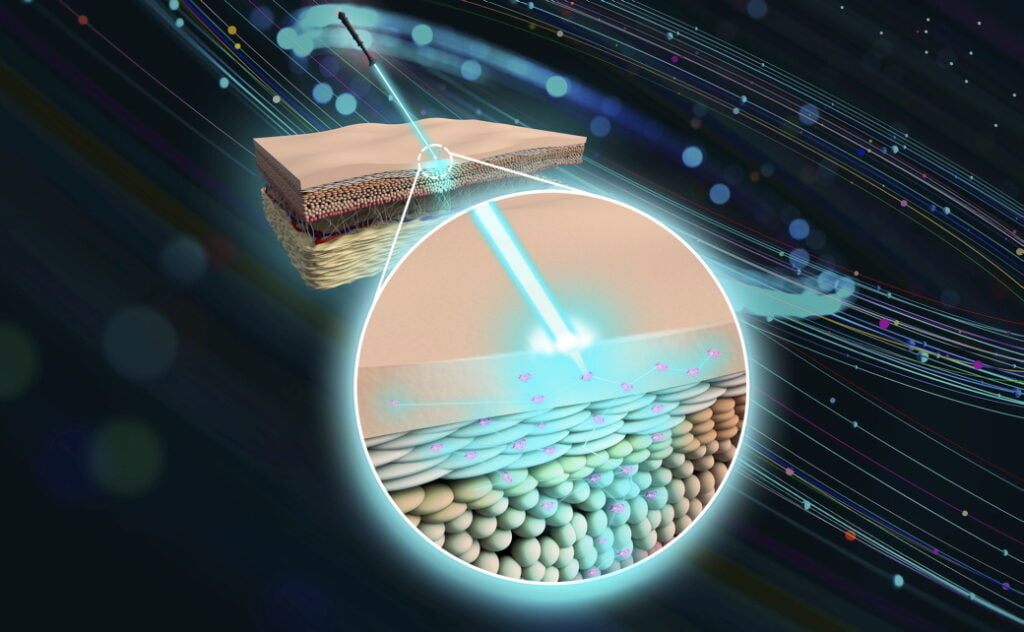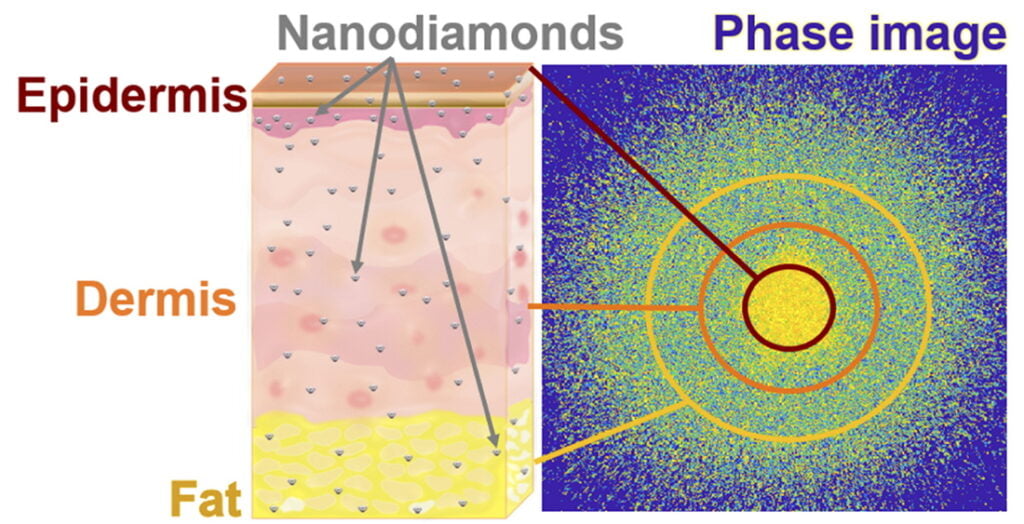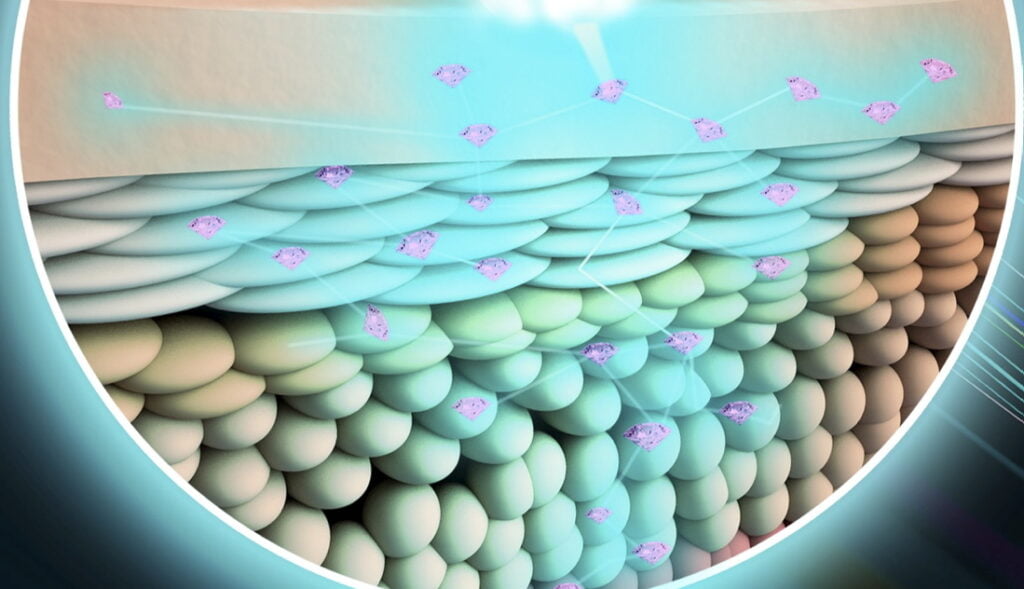New generation of medication to be absorbed through the skin
Researchers are using nanodiamonds to create a new generation of medication, which will be absorbed through the skin.
Tiny particles of carbon – measuring just a millionth of a millimeter – will offer a safe and pain-free alternative to injections.
Through-skin technology is already widely used in patches for nicotine, caffeine, contraception, pain relief and more. But to treat specific skin layers drug developers need to understand their “permeation profiles”, or how the particles behave as they pass through the skin.

Drug companies are developing new treatments, using invisible particles coated with medicine, but they need to know exactly which part of the skin they reach, to know whether they will work effectively.
A team at Israel’s Bar-Ilan University, near Tel Aviv, has made a breakthrough discovery that allows them to precisely track the movement of the particles, as never before.
Its laser-based system indicates whether the nanodiamonds are in the right place and in the right concentrations for through-the-skin treatments to work.
Without the lasers, drug developers carrying out clinical trials have had to take biopsies – an invasive and sometimes painful technique in which cells or tissue are removed – to see whether the nanodiamonds had reached their target.
“This is a significant development in dermatology and in optical engineering,” said Prof Dror Fixler, Director of the Institute of Nanotechnology and Advanced Materials at Bar-Ilan.

“It could open the door to developing drugs applied through the skin alongside modern cosmetic preparations using advanced nanotechnology.”
Nanodiamonds are a very recent innovation. They are produced at the university’s chemistry department by detonating explosives inside a closed chamber.
That replicates the high-pressure, high-temperature conditions under which natural diamonds are formed below the earth’s surface.
The nanodiamonds are then applied to the skin as a solution – a very fine powder mixed with a few drops of water. In lab experiments the team used pig skin, then measured the progress of the nanodiamonds after three hours.
The tricky bit is tracking something that measures just a millionth of a millimeter. It’s hard enough in any circumstance, but the skin tissue is turbid – opaque and hard to see through.
Sign up for our free weekly newsletter
Subscribe
Until now the only way to chart the movement of the nanodiamonds has been to carry out a biopsy, then examine the sample using a super-high-powered transmission electron microscopy.
There was no way of actually seeing the nanodiamonds in situ. Now there is. Prof Fixler and his team have combined a laser with an algorithm that allows them to “see” what’s going on.
The algorithm uses highly complex mathematics to interpret a basic visual image, and determine where the nanodiamonds are. They’re not actually visible, but the image captures data that allows the algorithm to understand their location.
“Most detectors, including eyes and cameras, detect the intensity of optical light waves,” Channa Shapira, a PhD student involved in the research at Bar-Ilan, tells NoCamels.
“But there’s a more complicated concept to understand, that can’t really be captured, even mathematically, called the phase.
“The phase is the imaginary part of the wave. It’s not measurable, but it holds a lot of important information.
“We take a set of images using a simple camera, then we have an algorithm that reconstructs the phase that is lost.”

Patients are briefly exposed to a blue laser beam. An optical system then creates a photograph-like 3D image through which optical changes in treated tissue can be extracted and compared to adjacent, untreated tissue using the specially-created algorithm.
“This new generation of medication can cross the skin and replace injections, and could be directed to specific sites and the body,” says Shapira.
“But in order to be able to direct them, we need to be able to track them first to see how deep they go, and how they permeate into the skin.
“Imaging is limited when you try detecting nanoparticles in such turbid surroundings.
“So, we are now heading to a different direction of sensing, like knowing concentrations of how the nanodiamonds permeate into the different skin layers, the epidermis, dermis and the fat without visualizing them.”
Related posts

Editors’ & Readers’ Choice: 10 Favorite NoCamels Articles

Forward Facing: What Does The Future Hold For Israeli High-Tech?

Impact Innovation: Israeli Startups That Could Shape Our Future




Facebook comments